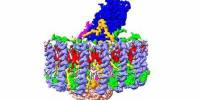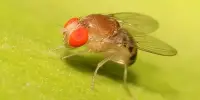Mutations can be both beneficial and detrimental. They can sometimes aid an organism’s adaptation and survival. Sometimes they are so toxic that an organism is unable to survive or reproduce. Professor Adam Siepel’s team at Cold Spring Harbor Laboratory (CSHL) has developed a computer program that tracks the history of harmful mutations in the human genome throughout evolution. They discovered that certain parts of the genome are especially vulnerable to mutations, which means that any mutations in those regions can have severe or fatal consequences. Their findings could help clinicians looking for the causes of serious genetic diseases.
ExtRaINSIGHT is Siepel’s program. It searches for harmful mutations by ignoring them. Every part of the human genome should have mutations by chance, but some do not. Siepel refers to these locations as “ultraselected.” When they occur, the mutations can be fatal or severely reduce the chances of reproduction.
“If we look across a panel of a hundred thousand humans and we never see a mutation at a particular gene, that suggests that any mutation that did occur was so harmful that anyone carrying that mutation died out of the population,” Siepel explains.
If you see a mutation in a splice site, you better take it seriously. That mutation alone would reduce your fitness by 1 or 2%. That doesn’t sound like very much, but that’s a huge fitness effect. And if you had multiple of these, pretty soon your chance of passing on your genes might be close to zero.
Professor Adam Siepel
The team analyzed over 70,000 human genomes with ExtRaINSIGHT. They discovered that three parts of the genome have been extremely sensitive to mutations over generations. Of these, splice sites are the most sensitive. Splice sites help produce correct instructions for making proteins. Mutations here can have a huge impact on the odds of passing down genes, also known as fitness. They’re linked to several diseases including spinal muscular atrophy, the leading genetic cause of death in infants and toddlers. Siepel says:
“If you see a mutation in a splice site, you better take it seriously. That mutation alone would reduce your fitness by 1 or 2%. That doesn’t sound like very much, but that’s a huge fitness effect. And if you had multiple of these, pretty soon your chance of passing on your genes might be close to zero.”

MiRNA molecules and central nervous system genes are also sensitive. “There’s a good chance that a mutation in miRNA is causing a genetic disease,” Siepel says. “And, because the nervous system is so complex and interconnected, it appears to be especially vulnerable to mutation.”
Many genetic diseases and conditions have unknown origins. Siepel hopes that technology such as ExtRaINSIGHT will aid in revealing their origins and in guiding diagnoses and future treatments. He also hopes that his research will help to show how mutations continue to shape the evolution of the human genome.
The Human Genome Project, or HGP, was a collaborative effort to map all of the genes found in humans. After being formally launched in 1990, it was declared complete in 2003, providing the worlds of medicine and science with the genetic building blocks of life to work with.
HGP was an international research program that was designed to be highly collaborative. The human genome contains more than 3 billion base pairs, far exceeding the estimated range of 50,000-140,000 base pairs when the program began. The long-term project involved more than 20 universities and research centers from the United States, Japan, China, and Europe.
















